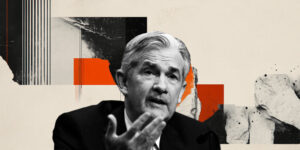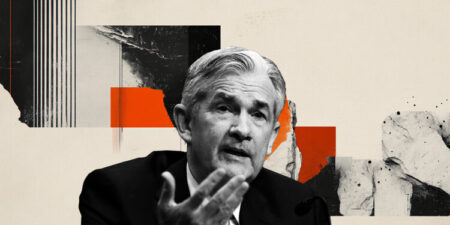- New Zealand Dollar extends losses to 0.5800 on track to a 2% weekly depreciation.
- The risk-averse sentiment ahead of Powell’s speech is underpinning the US Dollar.
- USD/JPY remains on the back foot since the RBNZ’s “dovish cut” earlier in the week.
The New Zealand Dollar extends losses for the fifth consecutive day against a firmer US Dollar, with investors reluctant to take risks ahead of Fed Powell’s speech at Jackson Hole. The pair has reached the 0.5800 level for the first time since mid-April, on track for a 2% weekly sell-off.
The US Dollar is outperforming its peers on Friday with all eyes on Fed Powell, who is expected to give further hints about the central bank´s next monetary policy steps. With the market pricing in a 75% chance of a rate cut in September, the US Dollar might be particularly sensitive to hawkish comments from Powell.
A divided Fed committee is failing to give any insight into Powell’s speech today. On Thursday, Fed officials Mammack and Smidt represented the hawkish party, downplaying risks of an economic downturn and warning about tariffs’ inflationary risks. At the same time, Collins showed openness to cut rates next month to support a softening labour market.
On the other hand, the Kiwi has been on the back foot since the Reserve Bank of New Zealand cut its Official Cash Rate (OCR) by 25 basis points to 3%, as widely expected, with two policymakers voting for a half-point rate cut. The voting standings raised hopes of further monetary easing down the road and sent the Kiwi tumbling across the board.
Fed FAQs
Monetary policy in the US is shaped by the Federal Reserve (Fed). The Fed has two mandates: to achieve price stability and foster full employment. Its primary tool to achieve these goals is by adjusting interest rates.
When prices are rising too quickly and inflation is above the Fed’s 2% target, it raises interest rates, increasing borrowing costs throughout the economy. This results in a stronger US Dollar (USD) as it makes the US a more attractive place for international investors to park their money.
When inflation falls below 2% or the Unemployment Rate is too high, the Fed may lower interest rates to encourage borrowing, which weighs on the Greenback.
The Federal Reserve (Fed) holds eight policy meetings a year, where the Federal Open Market Committee (FOMC) assesses economic conditions and makes monetary policy decisions.
The FOMC is attended by twelve Fed officials – the seven members of the Board of Governors, the president of the Federal Reserve Bank of New York, and four of the remaining eleven regional Reserve Bank presidents, who serve one-year terms on a rotating basis.
In extreme situations, the Federal Reserve may resort to a policy named Quantitative Easing (QE). QE is the process by which the Fed substantially increases the flow of credit in a stuck financial system.
It is a non-standard policy measure used during crises or when inflation is extremely low. It was the Fed’s weapon of choice during the Great Financial Crisis in 2008. It involves the Fed printing more Dollars and using them to buy high grade bonds from financial institutions. QE usually weakens the US Dollar.
Quantitative tightening (QT) is the reverse process of QE, whereby the Federal Reserve stops buying bonds from financial institutions and does not reinvest the principal from the bonds it holds maturing, to purchase new bonds. It is usually positive for the value of the US Dollar.
Read the full article here
















